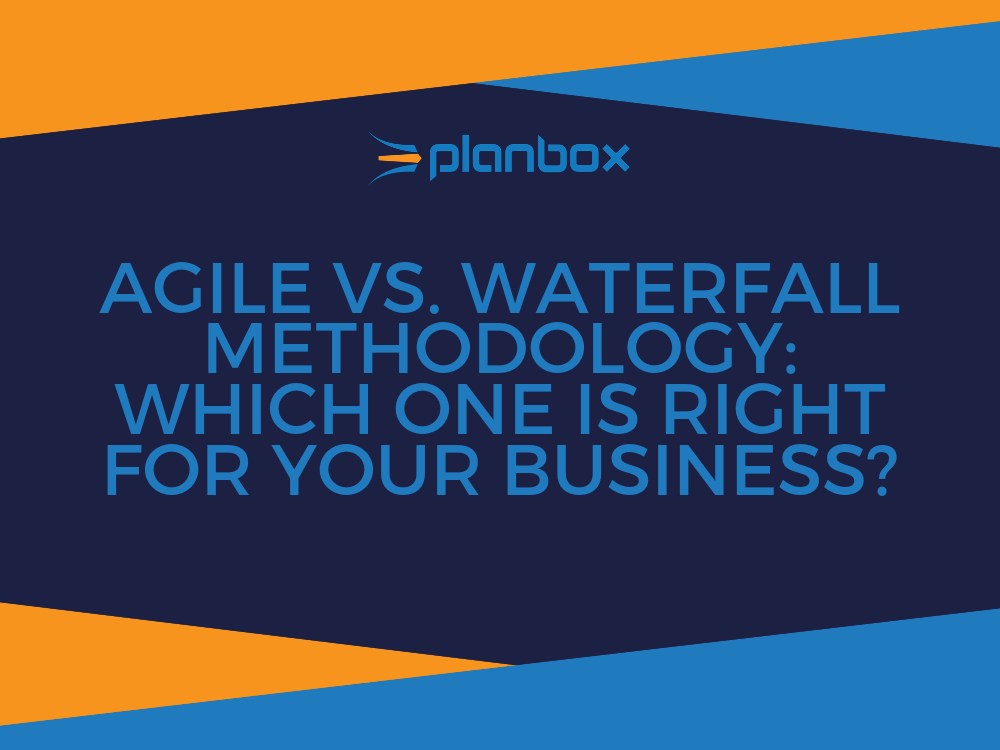Project management methodologies help you initiate, plan, execute, and monitor projects. However, there is not a “one size fits all” method. Every business is unique, and luckily there are different solutions to suit your company’s individual needs. Many businesses are adopting the more modern and flexible agile methodology. Some find the traditional, linear waterfall methodology better suited to their goals. Before deciding which direction is best for your business, it is important to understand what each methodology entails. There are pros and cons for both methods, which you can use to evaluate each method’s effectiveness for executing your project. In this article, we explain when to use the agile methodology vs. the waterfall methodology so that you can better choose which one is right for your business.
What is Agile Methodology?
Agile is a workplace philosophy that encourages teamwork, self-organization, and flexibility. This makes collaboration vital. As a business approach, the goal of agile is to create faster and more efficient processes for innovation and developing products. There is no linear model for this methodology because development and testing happen at the same time. However, there are tools that you can utilize to help successfully integrate agile into your business model. Open communication between managers, developers, customers, and stockholders is a key component of this methodology. One of the main goals of agile is to create self-sufficient teams throughout your organization. You can learn more about agile in our previous blog What Is Agile Methodology?
What is Waterfall Methodology?
Waterfall is a linear model following steps that can only be continued once the previous stage has been completed. This methodology uses a pattern of logical sequences – plan, build, test, and release. It focuses on the design phase of a project, and new projects are typically released once or twice a year. Unlike the flexibility of the agile methodology, the waterfall methodology is very rigid. Once a stage is completed, there is no returning to that stage. Using this model requires clear goals and well-defined project specifications. This traditional approach still has practical uses depending on the details of your project and the structure of your workplace.
When to Use Agile
Agile processes lead to rapid releases and continuous innovation. This is the methodology to choose for a fast-paced business structure and work environment. Agile processes are also helpful for projects with iteration stages that need to be customized for the customer as feedback is received or the end goal shifts. Less upfront planning is necessary for this methodology because the process allows for incremental updates. If your project is not well-defined or impending feedback matters to you but you still want to move forward, then agile is right for your business.
Pros:
- Increased communication, flexibility, and cross-functional teams lead to making changes easier.
- Specifications about your project can develop alongside the project so the end goal is flexible.
- Full transparency is fostered so that customers can see the work as the process moves forward, and customer input is encouraged.
- Open communication and feedback from both consumers and team members contribute to a steady rate of improvement.
Cons:
- Due to changing priorities and added iterations, it can be difficult to set delivery dates for the project.
- The use of small, cross-functional teams means that team members often wear too many hats.
- Collaboration is key for agile which can be a time consuming because developers must be fully committed to the project.
- Because a plan does not have to be set and changes are welcome throughout the process, the final product could be much different than the one proposed.
When to Use Waterfall
Waterfall works best to deliver a product exactly as it is outlined in your initial proposal. Due to the inflexibility of this method, requirements should be well understood and outlined. This is the method to choose if the product of your project will be applied to a legacy system not likely to change. Waterfall favors small projects where the speed of delivery is not important. Customer feedback is not integrated into this methodology, and a lot of changing customer demands could throw the project off track. If a very specific and rigid outcome from your project is desired, then waterfall is right for your business.
Pros:
- This approach is simple and straight-forward.
- The role of early planning and the emphasis on the design phase makes it easier to integrate your project with external systems.
- Due to the amount of planning required, cost and resources can be determined in advance.
- Clients and stockholders can be comforted with firm end goals and release dates.
Cons:
- Large projects often result in very lengthy release dates.
- Returning to development after testing begins can be difficult and expensive, which makes change unwelcome.
- Inexperienced teams or unforeseen circumstances can create obstacles that jeopardize the project.
- Staying on schedule is vital, so cutting corners on testing can leave bugs in the final product.
Deciding on the best project management methodology for your business can be overwhelming even with all of the pros and cons at hand. Technology can provide some software solutions in making the implementation of your process easier. To discuss custom solutions for your business, get in touch with one of our innovation consultants here.
Sources:
1. https://www.lambdatest.com/blog/agile-vs-waterfall-methodology/
2. https://www.cmswire.com/information-management/when-to-use-agile-vs-waterfall-for-your-next-project/
3. https://thedigitalprojectmanager.com/agile-vs-waterfall/
4. https://www.pmi.org/learning/library/agile-versus-waterfall-approach-erp-project-6300
5. https://www.smartsheet.com/when-choose-waterfall-project-management-over-agile

